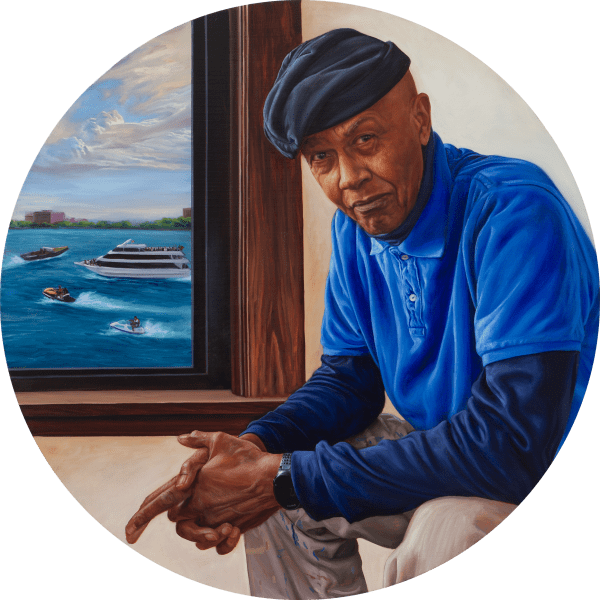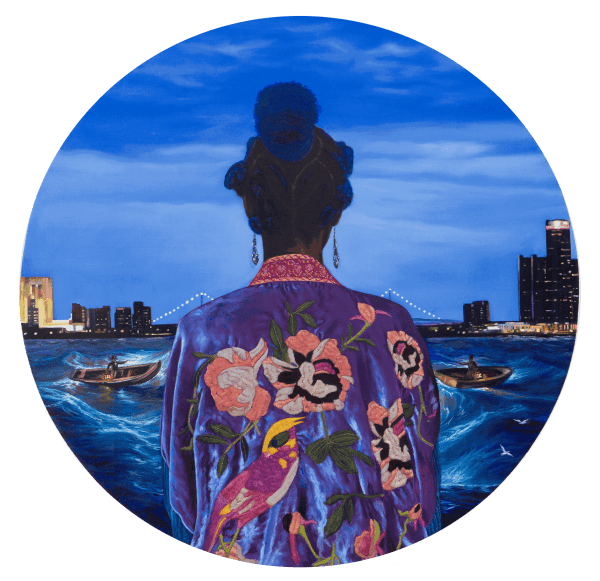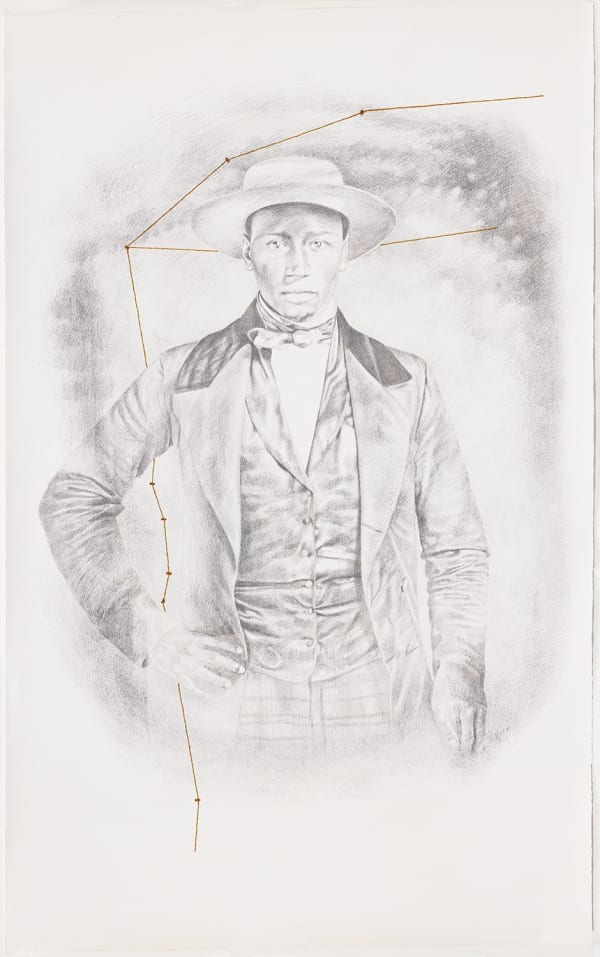Mario Moore | Midnight and Canaan: Detroit
-
 Mario Moore, Thornton and Lucie Blackburn in Canaan, 2022
Mario Moore, Thornton and Lucie Blackburn in Canaan, 2022 -
 Mario Moore, Lucie and Thornton Blackburn's Arrival in Midnight, 2022
Mario Moore, Lucie and Thornton Blackburn's Arrival in Midnight, 2022 -
 Mario Moore, Detroit Sons, 2022
Mario Moore, Detroit Sons, 2022 -
 Mario Moore, Blues Man: Allie at Home, 2022
Mario Moore, Blues Man: Allie at Home, 2022
[1] Evelyn Leasher, William Lambert: An African American Leader of Detroit’s Anti-Slavery Movement, https://www.cmich.edu/research/clarke-historical-library/explore-collection/explore-in-person/bibliographies/underground-railroad/william-lambert, , (accessed August 2022)
The title of this show, Midnight and Canaan, refers to the code words used by the abolitionists and freedom seekers on the Underground Railroad. Midnight stood for Detroit, the last stop before freedom, and Canaan stood for that true final freedom, Canada.
Water plays a critical role in this exhibition. It illustrates how the flowing border between Canada and Detroit was crossed continuously by the freedom seekers and the abolitionists. The Detroit and Windsor riverfronts are repeated throughout the work to form a sense of familiarity with this border but also to teeter on a kind of imaginary world that is embodied by crossing water. It asks the viewer to think about the paths that we cross every day like the embroidered stitching that appears in the silverpoint drawings throughout the series. A collaboration with my mother, Sabrina Nelson, the stitching traces paths that signify points and places on a journey such as Battle Creek, Port Huron, Detroit, and Amherstburg. These paths continue to be crossing sites for people seeking refuge and asylum from the Middle East and Central and South America today.
Using my contemporaries as models, the work flows into the present with the acknowledgement of abstractionist great, Allie McGhee and sculptor Tiff Massey. These portraits pinpoint a time in Detroit creating a stamp on the significance Black people have had within the city borders and beyond. They reflect on a moment in Detroit when gentrification continues to push the Black population out of their neighborhoods. Resisting that movement, McGhee and Massey take a powerful stance on belonging to the city they have helped to shape culturally, claiming their space on this international waterfront so significant to people like the Blackburns and Lambert.
Finally, this series, my first body of work that depicts the early history of Black people in Detroit and Windsor, is about Black agency and resistance. It asks the viewer to consider the challenges, stamina, and willpower of people from the past and present within these two cities. What does the future hold for Black populations on this international border?













